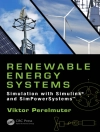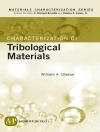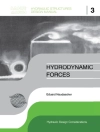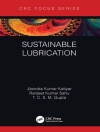This book consolidates information about multifunctional epoxy as a frontier material, its composites, engineering and applications in a very detailed manner that encompasses the entire spectrum of up-to-date literature citations, current market trends and patents. It highlights latest experimental and theoretical studies on the atypical properties of epoxy resins such as self-healing, thermally and electrically conductivity; and its applications in devices where there is reliance on unsustainable sourced inorganic materials with comparable properties. It caters to polymer chemists, physicists and engineers who are interested in the field of next generation epoxy polymers.
Зміст
Chapter 1 - Introduction to multifunctional epoxy resins – fundamentals, state of the art and challenges.- Part 1- Self-healing resins.- Chapter 2 - Basics of self-healing epoxy systems General concepts, behavior and mechanism.- Chapter 3 - Mechanism of extrinsic and intrinsic self-healing in polymer systems.- Chapter 4 - Synthetic design of self-healing epoxy systems.-Chapter 5 - State of art in intrinsic self-healing epoxy networks (advantages, issues and outlook).- Chapter 6 - Epoxy based corrosion resistant and self-healing coatings.- Chapter 7 - Self-healing epoxy resin with multi stimuli-responsive behavior.- Chapter 8 - Bioinspired self-healing epoxy resins.- Chapter 9 - Modelling and Simulation of self-healing systems.- Part 2- Shape memory resins.- Chapter 10 - Basics of shape memory systems General concepts, behavior and mechanism).- Chapter 11 - Synthetic approaches of shape memory epoxy systems.- Chapter 12 - Properties and characterization of shape memory resins.- Chapter 13 - Modelling and Simulation in shape memory systems.- Chapter 14 - Applications of shape memory epoxy systems.- Part 3 - Thermally conductive resin systems .- Chapter 15 - Fundamentals of thermal conductivity in polymer network.- Chapter 16 - Imparting thermal conductivity in epoxy: Approaches and mechanism.- Chapter 17 - Modelling, simulation and machine learning in thermally conductive epoxy materials.- Chapter 18 - Applications of thermally conductive resins.- Part 4 – Electrically conductive epoxy resins.- Chapter 19 - Fundamentals of electrical conductivity in polymers.- Chapter 20 - Imparting electrical conductivity in epoxy: Approaches and mechanism.- Chapter 21 - Modelling, simulation and machine learning in electrically conductive epoxy materials.-Chapter 22 - Applications of electrically conductive epoxy resins.
Про автора
Associate Professor Nishar Hameed:
Group Leader, Smart Materials Lab, Faculty of Science, Engineering and Technology, Swinburne University of Technology
Nishar’s research is focused on the novel and faster processing of next generation ‘smart’ polymers and composite materials. He has published more than 100 high impact journal papers, 6 book chapters, 3 edited books and 2 patents. His several achievements include many “firsts” in the field, inspiring many follow-up studies. Nishar recently developed a new method to produce flexible, toughened, and fast cure resins that can be integrated to make formable and rapid cure fibre reinforced composites, concrete preforms and graphene nanocomposites. His research has also led to the development of a new, environmentally processing route to make plastics films and fibres from natural polymers (cellulose, wool, silk) and biomass. Nishar won many awards as he advances his research career including AINSE (Australian Institute of Nuclear Science and Engineering) Post Graduate Research Award, Smart Geelong Early Researcher Award, Young Tall Poppy Award, Phillip Law Award and Deakin’s Best Doctoral Thesis Award. He has been awarded several prestigious fellowships including the highly esteemed Victoria Fellowship, Famelab State Finalist and two Endeavour Fellowships. He has held visiting appointments at Rice University, University of California Los Angeles, University of Southern Mississippi, University of Kentucky, CNRS Montpellier, Indian Institute of Technology Madras and Indian Institute of Science Bangalore.
Mr Jaworski Capricho:
Research Scholar, Faculty of Science, Engineering and Technology, Swinburne University of Technology
Jaworski is a research scientist within the Smart Materials Lab at the School of Engineering, Swinburne University of Technology Australia. Jaworski is a licensed chemist in the Philippines, science author, and inventor. He has laboratory and project management experience in both research and industry in Asia, New Zealand, and Australia and led several research and development studies involving polymers and biomaterials. He is an inventor of a patent family applied worldwide; three have been granted in Australia, Japan, and Brazil as of this time. In 2018, he joined the research group of A/Prof Nishar Hameed and Prof Bronwyn Fox at Swinburne University of Technology. He is a recipient of the ARC (Australian Research Council) Ph D Scholarship and Tuition-Free Scholarship from Swinburne University and a former Visiting Scientist of CSIRO (Commonwealth Scientific and Industrial Research Organization) and Guest Researcher at the ANSTO-HZB Neutron School in Sydney. In July 2019 and 2020, ANSTO awarded two of his proposals entitled “Spectral imaging of polynitroxyl radical epoxy thermosets via infrared polariscopy with focal point array detection” to use the IRM (Infrared Microscopy) beamline in the Australian Synchrotron, valued close to AUD $200, 000 in relation to his current work on the development of thermoset resins exhibiting multifunctional behavior with their associated Industry 4.0 potential. He has published in leading chemistry, polymer, and materials journals and presented his work as an invited speaker at the ICCM22 (22nd International Conference on Composite Materials) and the 37th Australasian Polymer Symposium; and a poster in the 2019 Carbon Innovation Conference, ICCM22, the 2019 Emerging Polymer Technologies Summit and several HDR Graduate Symposiums at Swinburne University.
Dr Nisa Salim:
Vice Chancellors Initiative Senior Research Fellow, School of Engineering, Swinburne University of Technology
She is currently a Vice-Chancellor’s Initiative Senior Research Fellow who received her Ph.D. from Deakin University in Materials in Engineering. Her research activities have been on multifunctional carbon-based materials product developments, based on scalable formulations of carbon materials, their structure and function. Her expertise includes the synthesis, functionalization and fabrication of functional polymers and carbon materials for energy, and sensor applications. She has published over 65 high-impact journal papers, 5 book chapters and 1 patent. Her research has been presented at conferences on more than 40 occasions and she has been an invited speaker at local, interstate and international venues. She has received more than 15 awards and fellowships for her research innovation and impact, starting with a highly prestigious Gold Medal from the Australian Institute of Nuclear Science and Engineering (AINSE) for Excellence in Research in 2014. The awarding bodies include scientific organisations, professional associations, and federal and state governments. This includes Smart Geelong Early Researcher Award, Victoria Fellowship, Endeavour Fellowship, Alfred Deakin Fellowship and many more even with a career break of more than 2 years. Her vision is to develop multifunctional, engineered materials that are enablers for sustainable, next generation technologies. She is currently an Editorial board member (ECR) for Chemical Engineering Journal, Elsevier.
Professor Dr Sabu Thomas:
Vice Chancellor and Professor of Nanoscience and Polymer Science, Mahatma Gandhi University, Priyadarshini Hills PO, Kottayam, Kerala, 686 560 India.
He is currently Vice Chancellor of Mahatma Gandhi University and the Founder, Director and Professor of the International and Inter-university Centre for Nanoscience and Nanotechnology. He is also a full professor of polymer science and engineering at the School of Chemical Sciences, Mahatma Gandhi University, Kottayam, Kerala, India. Professor He is an outstanding leader with sustained international acclaims for his work in nanoscience, polymer science and engineering, polymer nanocomposites, elastomers, polymer blends, interpenetrating polymer networks, polymer membranes, green composites, nanocomposites, nanomedicine and green nanotechnology. His ground-breaking inventions in polymer nanocomposites, polymer blends, green bio-nanotechnological and nano-biomedical sciences have made transformative differences in the development of new materials for the automotive, space, housing and biomedical fields. In collaboration with India’s premier tyre company, Apollo Tyres, his group invented high-performance barrier rubber nanocomposite membranes for inner tubes and inner liners for tyres. He has received a number of national and international awards, which include: Fellowship of the Royal Society of Chemistry, London FRSC, Distinguished Professorship from Josef Stefan Institute, Slovenia, MRSI Medal, Nano Tech Medal, CRSI Medal, Distinguished Faculty Award, Dr APJ Abdul Kalam Award for Scientific Excellence-2016, Mahatma Gandhi University Award for Outstanding Contribution-2016, Lifetime Achievement Award of the Malaysian Polymer Group, Indian Nano Biologists Award 2017 and the Sukumar Maithy Award, for the best polymer researcher in the country. He is in the list of most-productive researchers in India and holds the position of No. 5. Recently, because of outstanding contributions to the field of nanoscience, polymer science and engineering, he has been conferred with Honoris Causa (D.Sc) Doctorate by the University of South Brittany, Lorient, France and the University of Lorraine, Nancy, France. Very recently, he has been awarded Senior Fulbright Fellowship to visit 20 universities in the USA and the most productive faculty award in the domain of materials sciences. Professor Thomas has published over 1000 peer-reviewed research papers, has co-edited 165 books, and has 15 patents. His H-index is 122, and he has more than 72, 000 citations.












